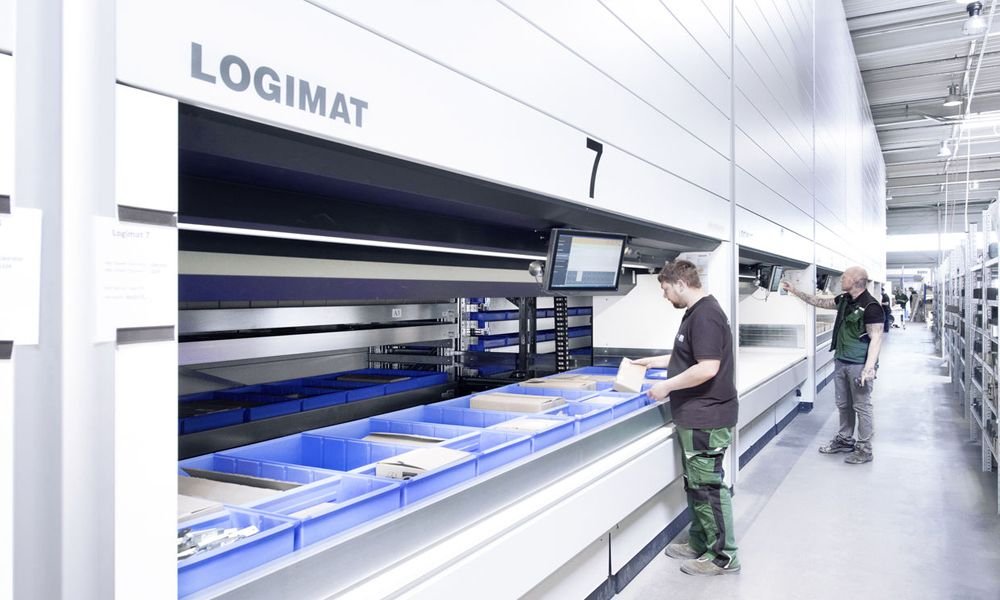Positive trends from the second half of 2020 continued. Sales reached CHF 272.0 million (+16.7% compared to CHF 233.2 million in the same period of the previous year). In local currency, sales grew by +16.4%.
Order intake increased significantly by +60.1% to CHF 421.6 million (previous year: CHF 263.4 million). In local currency, the increase was even slightly better at +61.0%.
Interroll again succeeded in increasing EBIT at a disproportionately high rate of +39.5% to CHF 45.0 million (previous period: CHF 32.3 million).
“In the first half of 2021, Interroll recorded record growth in order intake, EBIT and profit,” says Ingo Steinkrüger, Chief Executive Officer of Interroll Worldwide Group. “In addition to investments in technology platforms and capacities, our high cost and investment discipline also contributed to this positive result.”
Strong project business, product business with potential
At CHF 63.9 million, consolidated sales in the “Rollers” product groupwere +21.7% higher than in the previous year. All regions contributed to the growth. In terms of incoming orders, the product group recorded a strong recovery of +47.2% to CHF 79.7 million (previous-year period: CHF 54.2 million). This excellent performance was driven by highly efficient manufacturing processes and the high quality of Interroll products. However, Interroll also proactively anticipated and exploited the potential of market trends, such as the continued strong development of e-commerce and user investments in modernization and outsourcing to third-party logistics (3PL) providers.
Consolidated sales of the “Drives” Product Groupamounted to CHF 93.2 million in the first half of 2021, up +17.8% on the previous-year period (CHF 79.1 million). Thanks to innovative products such as the EC5000 RollerDrive, which is successful in the market, consolidated order intake rose to CHF 119.6 million compared with CHF 77.4 million in the prior-year period.
The “Conveyors & Sorters” product grouprecorded consolidated sales of CHF 88.1 million in the first half of 2021, 8.9% higher than in the same period of the previous year (CHF 80.9 million). Order intake rose significantly to CHF 186.6 million, an increase of 67.4% compared to the previous year period with CHF 111.4 million.
At the end of the first half of 2021, Interroll generated consolidated revenue of CHF 26.9 million with the “Pallet Handling” product group, up 30.6% on the same period of the previous year (CHF 20.6 million). Consolidated order intake increased by 74.7% to CHF 35.7 million (previous year: CHF 20.4 million).
At the end of the first half, the regions accounted for 60% of total sales in Europe, Middle East, and Africa (EMEA), 27% in the Americas, and 13% in Asia-Pacific.
In the EMEA region, consolidated sales amounted to 162.2 million, 15.7% above the previous year (CHF 140.2 million). Consolidated order intake increased by 53.3% compared to the previous year (CHF 144.2 million) and reached CHF 221.1 million. The EMEA region thus recovered strongly in the first half of 2021.
Sales in the Americas regionamounted to CHF 74.5 million, 17.4% higher than in the previous year (CHF 63.5 million). With growth of 95.8% in order intake to CHF 151.3 million (previous year: CHF 77.3 million), a very strong dynamic was noticeable. New orders for sorters doubled, which also include orders for the new High-Performance Crossbelt Sorter (HPCS) and two major projects.
Interroll’s consolidated sales in the Asia-Pacific regiongrew by 19.8% to CHF 35.3 million (previous year: CHF 29.5 million). Order intake achieved growth of 17.3% to CHF 49.1 million (previous year: CHF 41.9 million). Rollers and RollerDrive in particular recorded an increase in demand. The sorter demand recovered strongly, but demand for conveyors declined.
Results with significant growth
At CHF 56.3 million, Interroll significantly exceeded the previous year’s level (CHF 43.5 million) by 29.3% in terms of earnings before interest, taxes, depreciation and amortization (EBITDA) in the first half of the year- The EBITDA margin increased to 20.7% (previous year: 18.7%). EBIT reached CHF 45.0 million and were +39.5% above the previous year’s figure of CHF 32.3 million. Result increased by 40.4% to CHF 33.4 million (previous year : CHF 23.8 million). The result margin reached 12.2% (previous year: 10.2%).
Higher investments
Gross capital expenditures amounted to CHF 32.0 million (previous year: CHF 26.0 million). Free cash flow thus decreased to CHF -5.0 million (previous year: CHF 20.0 million ). The construction of the new plant in Mosbach, southern Germany, was completed in the reporting period and the new plant in Suzhou, China, is already under construction.
Solid balance sheet, strong cash flow development
Total assets increased to CHF 541.3 million by June 30, 2021, 15.5% higher than at the end of last year’s period (CHF 468.8 million). Equity amounted to CHF 312.6 million, while the equity ratio was 57.8% (31.12.2020: 66.5%).
Operating cash flow decreased by 44.5% to CHF 25.3 million (previous year: CHF 45.6 million).
Outlook
Due to a high order backlog, the company has a positive outlook, but at the same time the situation on the raw material markets and for precursors such as semiconductors remains very tense. The company thus remains cautiously optimistic overall for the rest of the year.
Thanks to its strong market position, innovative products and dynamically growing end markets (e-commerce and courier, express, and parcel [CEP], food and beverage, and warehousing and distribution), Interroll also sees long-term growth potential.





